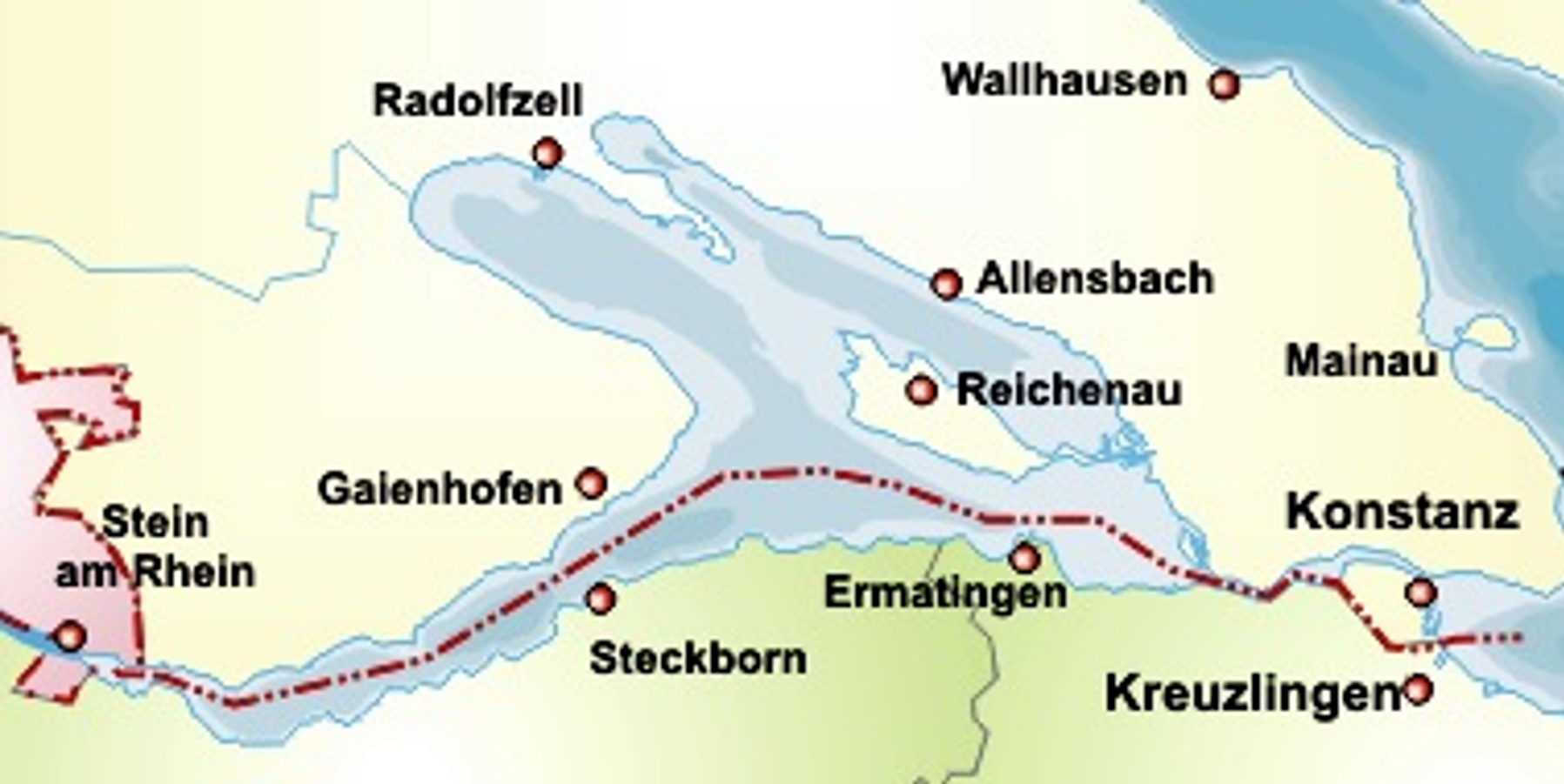|
Manegold Von Mammern
Manegold von Mammern (also ''Manegold von Böttstein-Mammern''; died 1 May 1133) was abbot of the Abbey of Saint Gall from 1121 to 1133. He descended from a noble family from the area around Untersee. He is documented for the years 1125 and 1126. Works After Heinrich von Twiel had been elected abbot by the emperor-supporting party of the convent in 1121, his opponents contested the legitimacy of his election and appointed Manegold von Mammern as abbot. The official inauguration occurred in September 1122. Manegold focused his work as abbot on the restoration of the erstwhile property of the abbey. This had become necessary because both he and his opponent, Heinrich von Twiel, had in the course of the battle for the abbacy tried to build a loyal following by means of granting fief. Manegold succeeded in restoring the monastery property north of Lake Constance to the Abbey of Saint Gall. In order to secure the restored property, he built Castle Praßberg near Wangen. In Saint Gal ... [...More Info...] [...Related Items...] OR: [Wikipedia] [Google] [Baidu] |
Abbot
Abbot is an ecclesiastical title given to the male head of a monastery in various Western religious traditions, including Christianity. The office may also be given as an honorary title to a clergyman who is not the head of a monastery. The female equivalent is abbess. Origins The title had its origin in the monasteries of Egypt and Syria, spread through the eastern Mediterranean, and soon became accepted generally in all languages as the designation of the head of a monastery. The word is derived from the Aramaic ' meaning "father" or ', meaning "my father" (it still has this meaning in contemporary Hebrew: אבא and Aramaic: ܐܒܐ) In the Septuagint, it was written as "abbas". At first it was employed as a respectful title for any monk, but it was soon restricted by canon law to certain priestly superiors. At times it was applied to various priests, e.g. at the court of the Frankish monarchy the ' ("of the palace"') and ' ("of the camp") were chaplains to the Merovingian and ... [...More Info...] [...Related Items...] OR: [Wikipedia] [Google] [Baidu] |
Abbey Of Saint Gall
The Abbey of Saint Gall (german: Abtei St. Gallen) is a dissolved abbey (747–1805) in a Catholic religious complex in the city of St. Gallen in Switzerland. The Carolingian-era monastery existed from 719, founded by Saint Othmar on the spot where Gallus had erected his hermitage. It became an independent principality between 9th and 13th centuries, and was for many centuries one of the chief Benedictine abbeys in Europe. The library of the Abbey is one of the oldest monastic libraries in the world. The city of St. Gallen originated as an adjoining settlement of the abbey. The abbey was secularized around 1800, and in 1848 its former church became a Cathedral. Since 1983 the abbey precinct has been a UNESCO World Heritage Site. History Foundation Around 612 Gallus, according to tradition an Irish monk and disciple and companion of Saint Columbanus, established a hermitage on the site that would become the monastery. He lived in his cell until his death in 646, and wa ... [...More Info...] [...Related Items...] OR: [Wikipedia] [Google] [Baidu] |
Untersee (Lake Constance)
The Untersee (German for ''Lower Lake''), also known as Lower Lake Constance, is the smaller of the two lakes that together form Lake Constance and forms part of the boundary between Switzerland and Germany. Geography The Lower Lake Constance measures and is situated about lower than the Obersee. The Romans called it ''Lacus Acronius''. In the Middle Ages, the Upper Lake was called ''Bodamicus Lacus'', or ''Bodensee'' in German. At some point in time, this term began to include the Lower Lake, and a new term "Upper Lake" (in German: '' Obersee''), was introduced for the larger lake. The main tributaries are the Seerhein and Radolfzeller Aach. The landscape surrounding the Untersee is very diverse. The Untersee contains two islands: Reichenau and Werd (near the transition to the High Rhine). In the northeast is found the peninsula Bodanrück; in the northwest, the Hegau lowlands with the peninsula Mettnau; in the west, the peninsula Höri, with a mountain called Schiener ... [...More Info...] [...Related Items...] OR: [Wikipedia] [Google] [Baidu] |
Lake Constance
Lake Constance (german: Bodensee, ) refers to three Body of water, bodies of water on the Rhine at the northern foot of the Alps: Upper Lake Constance (''Obersee''), Lower Lake Constance (''Untersee''), and a connecting stretch of the Rhine, called the Seerhein, Lake Rhine (''Seerhein''). These waterbodies lie within the Lake Constance Basin () in the Alpine Foreland through which the Rhine flows. The lake is situated where Germany, Switzerland, and Austria meet. Its shorelines lie in the German states of Baden-Württemberg and Bavaria, the Swiss cantons of Canton of St. Gallen, St. Gallen, Canton of Thurgau, Thurgau, and Canton of Schaffhausen, Schaffhausen, and the Austrian state of Vorarlberg. The actual location of the border Lake_Constance#International_borders, is disputed. The Alpine Rhine forms in its original course the Austro-Swiss border and flows into the lake from the south. The High Rhine flows westbound out of the lake and forms (with the exception of the Canton ... [...More Info...] [...Related Items...] OR: [Wikipedia] [Google] [Baidu] |
Wangen Im Allgäu
Wangen im Allgäu ( Low Alemannic: ''Wãnge'') is a historic city in southeast Baden-Württemberg, Germany. It lies north-east of Lake Constance in the Westallgäu. It is the second-largest city (Population: 26,927 in 2020) in the Ravensburg district and is a nexus for the surrounding communities. From 1938 to 1972, Wangen was the county seat of the Wangen rural district. Geography Wangen in Allgäu lies on the north bank of the Obere Argen. The Untere Argen flows past northwest Wangen and unites southwest of the city with the Obere Argen. The city today is shaped by its historical town center as well as by numerous nearby districts. Neighboring municipalities Several settlements border Wangen. Their names are as follows: Amtzell, Vogt, Kißlegg, Argenbühl, and Achberg (Ravensburg district), Hergatz and Hergensweiler (Lindau district), and Neukirch (Bodensee district). History The city was first mentioned in 815 under the name "Wangun" in a monastery document. In 1217 ... [...More Info...] [...Related Items...] OR: [Wikipedia] [Google] [Baidu] |
Saint Gall
Gall ( la, Gallus; 550 646) according to hagiographic tradition was a disciple and one of the traditional twelve companions of Columbanus on his mission from Ireland to the continent. Deicolus was the elder brother of Gall. Biography The fragmentary oldest ''Life'' was recast in the 9th century by two monks of Reichenau, enlarged in 816–824 by Wettinus, and about 833–884 by Walafrid Strabo, who also revised a book of the miracles of the saint. Other works ascribed to Walafrid tell of Saint Gall in prose and verse. Gall's origin is a matter of dispute. According to his 9th-century biographers in Reichenau, he was from Ireland and entered Europe as a companion of Columbanus. The Irish origin of the historical Gallus was called into question by Hilty (2001), who proposed it as more likely that he was from the Vosges or Alsace region. Schär (2010) proposed that Gall may have been of Irish descent but born and raised in the Alsace. According to the 9th-century hagiograp ... [...More Info...] [...Related Items...] OR: [Wikipedia] [Google] [Baidu] |
Last Judgment
The Last Judgment, Final Judgment, Day of Reckoning, Day of Judgment, Judgment Day, Doomsday, Day of Resurrection or The Day of the Lord (; ar, یوم القيامة, translit=Yawm al-Qiyāmah or ar, یوم الدین, translit=Yawm ad-Dīn, label=none) is part of the Abrahamic religions and the ''Frashokereti'' of Zoroastrianism. Christianity considers the Second Coming of Jesus Christ to entail the final judgment by God of all people who have ever lived, resulting in the approval of some and the penalizing of others. The concept is found in all the canonical gospels, particularly in the Gospel of Matthew. The Christian tradition is also followed by Islam, where it is mentioned in the 43rd chapter (''Az-Zukhruf'') of the Quran, according to some interpretations. Christian futurists believe it will follow the resurrection of the dead and the Second Coming of Jesus, while full preterists believe it has already occurred. The Last Judgment has inspired numerous artistic depic ... [...More Info...] [...Related Items...] OR: [Wikipedia] [Google] [Baidu] |
1133 Deaths
Year 1133 ( MCXXXIII) was a common year starting on Sunday (link will display the full calendar) of the Julian calendar. Events By place Europe * Spring – A German expeditionary force, led by King Lothair III, marches into northern Italy, and arrives at Rome, after a 6-month journey across the Alps. Accompanied by Bernard of Clairvaux, French abbot and Doctor of the Church, Lothair is crowned by Pope Innocent II as Holy Roman Emperor at the Church of the Lateran, on June 4. He receives as papal fiefs the vast estates of Matilda, former margravine of Tuscany, which he secures for his daughter Gertrude of Süpplingenburg and her husband, Duke Henry X (the Proud) of Bavaria. * July 17 – Battle of Fraga: The Castellan troops led by King Alfonso I (the Battler) defeat the Almoravid army, thanks to a timely intervention of a Norman Crusader army from Tarragona, led by Robert Bordet. * Ramon Berenguer IV, count of Barcelona, launches a raid against Almoravid-he ... [...More Info...] [...Related Items...] OR: [Wikipedia] [Google] [Baidu] |
Year Of Birth Unknown
A year or annus is the orbital period of a planetary body, for example, the Earth, moving in its orbit around the Sun. Due to the Earth's axial tilt, the course of a year sees the passing of the seasons, marked by change in weather, the hours of daylight, and, consequently, vegetation and soil fertility. In temperate and subpolar regions around the planet, four seasons are generally recognized: spring, summer, autumn and winter. In tropical and subtropical regions, several geographical sectors do not present defined seasons; but in the seasonal tropics, the annual wet and dry seasons are recognized and tracked. A calendar year is an approximation of the number of days of the Earth's orbital period, as counted in a given calendar. The Gregorian calendar, or modern calendar, presents its calendar year to be either a common year of 365 days or a leap year of 366 days, as do the Julian calendars. For the Gregorian calendar, the average length of the calendar year ( ... [...More Info...] [...Related Items...] OR: [Wikipedia] [Google] [Baidu] |





.jpg)
